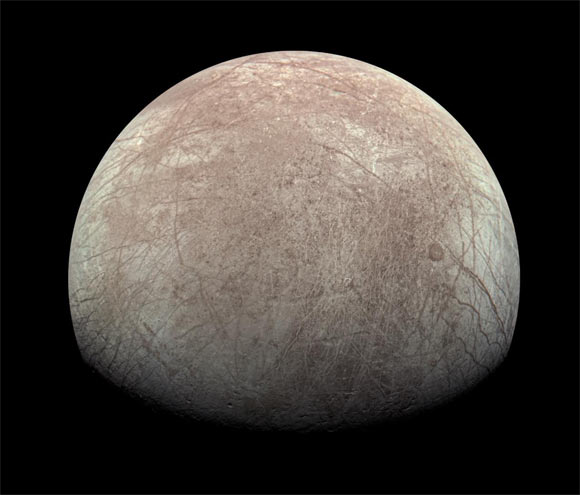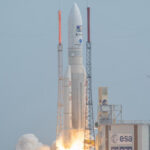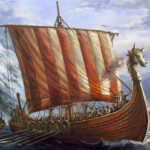Intense tectonism is evident on many outer solar system satellites — such as Ganymede, Europa, and Enceladus — with some surface regions showing ridge-and-trough structures which have characteristics suggestive of normal faulting. In some cases, topographic lows between subparallel ridges are sites of smooth material displaying few craters. In new research, scientists from the University of Arizona and NASA’s Jet Propulsion Laboratory developed and tested the hypothesis that some smooth materials on the icy satellites formed through degradation of fault blocks by seismically triggered landslides.
This view of Europa was captured by the JunoCam imager aboard NASA’s Juno spacecraft during the mission’s close flyby on September 29, 2022. Image credit: NASA / JPL-Caltech / SwRI / MSSS / Kevin M. Gill.
On the surfaces of icy moons such as Europa, Ganymede, and Enceladus, it’s common to see steep ridges surrounded by relatively flat, smooth areas.
Planetary scientists have theorized that these spots result from liquid that flows out of icy volcanoes.
But how that process works when the surface temperatures are so cold and inhospitable to fluids has remained a mystery.
A simple explanation outlined in the study doesn’t involve liquid on the surface.
University of Arizona graduate student Mackenzie Mills and colleagues measured the dimensions of the steep ridges, which are believed to be tectonic fault scarps (like those on Earth) — steep slopes caused when the surface breaks along a fault line and one side drops.
By applying the measurements to seismic models, the researchers estimated the power of past moonquakes and found they could be strong enough to lift debris that then falls downhill, where it spreads out, smoothing the landscape.
“We found the surface shaking from moonquakes would be enough to cause surface material to rush downhill in landslides,” Mills said.
“We’ve estimated the size of moonquakes and how big the landslides could be.”
“This helps us understand how landslides might be shaping moon surfaces over time.”
NASA’s upcoming Europa Clipper mission, bound for Jupiter’s moon Europa in 2024, will give the research a significant boost, providing imagery and other science data.
After reaching Jupiter in 2030, the spacecraft will orbit the gas giant and conduct about 50 flybys of Europa.
The mission has a sophisticated payload of nine science instruments to determine if Europa, which scientists believe contains a deep internal ocean beneath an outer ice shell, has conditions that could be suitable for life.
“It was surprising to find out more about how powerful moonquakes could be and that it could be simple for them to move debris downslope,” said Europa Clipper project scientist Robert Pappalardo, of NASA’s Jet Propulsion Laboratory.
“Especially surprising were the modeling results for tectonic activity and quakes on Saturn’s moon Enceladus, a body that has less than 3% of the surface area of Europa and about 1/650 that of Earth.”
“Because of that moon’s small gravity, quakes on tiny Enceladus could be large enough to fling icy debris right off the surface and into space like a wet dog shaking itself off.”
When it comes to Europa, the high-resolution images gathered by Europa Clipper will help scientists determine the power of past moonquakes.
They will be able to apply the recent findings to understand whether quakes have moved ice and other surface materials and by how much.
Images from ESA’s JUICE mission will offer similar information about Europa’s neighboring Jovian moon, Ganymede.
“We hope to gain a better understanding of the geological processes that have shaped icy moons over time and to what extent their surfaces may still be active today,” Dr. Pappalardo said.
The findings appear in the journal Icarus.
_____
Mackenzie M. Mills et al. 2023. Moonquake-triggered mass wasting processes on icy satellites. Icarus 399: 115534; doi: 10.1016/j.icarus.2023.115534




